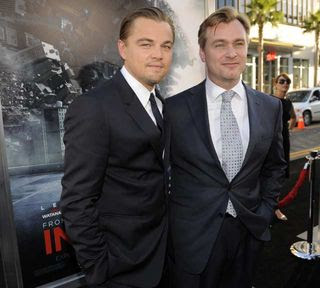Catherine Keener in Please Give, directed by Nicole Holofcener, production design by Mark White, 2010.
When I first saw the house that is now my home, it was hardly in an appealing state. Every window was obscured layers of screens, shutters and (amateur) stained glass. The bathroom was encrusted in pink-orange Mexican tiles, with trim to match. The living room walls looked like they were covered in moldy cork, actually wallpaper. I saw a man walk in, blanch, and walk out the front door of the open house. Maybe it is only natural that, from the moment I entered, I wanted the furniture more than I wanted the house.
Right there in the center of the room, a yellow Naugahyde pedestal chair, pulled up to a rosewood trestle desk. In the corner, what looked like a well-worn Eames lounge. And ottoman. Upstairs, somewhat paint splattered, a pair of rosewood dressers with mod porcelain knobs. And a low chair, dark wood, scary brown tweed upholstery, that had distinctly Juhl lines. While my husband chatted with the realtor (who, there in the gloom, basically said, “Make me an offer”), I tried to figure out how to casually open the dresser drawers, and then not to look so excited when the tags inside read, “George Nelson Design, Herman Miller, Zeeland, Michigan.” Left alone, I knelt down to look at the bottom of the low chair, but saw nothing. I knew the yellow one couldn’t be Saarinen, but it was at least a vintage knock-off. “Are they going to be taking the furniture?” I asked the realtor, as neutrally as I could. The answer was no, everything must go. Make the estate an offer.
With this as background, you can imagine my glee at the second scene in Please Give, Nicole Holofcener’s new film, starring Catherine Keener and Oliver Platt as the owners of a vintage modern furniture shop. The son of the deceased is showing Kate (Keener) around a cluttered apartment, apologizing for the smell. We get a minute to see the room through her eyes: the clean lines of the beige sofa, the ladderback chairs around a dark oval table, the funky ceramic lamps. She asks a polite question about how old he thinks the furniture is. “You know, old,” he says. “That’s wood,” he adds, pointing pointlessly at the table. Kate begins to glide around, making small talk and small gestures. Raps on the coffee table. Lifts a cushion on the couch. Slides a hand along the dining table and, I thought, tries to peek underneath without obvious stooping. The man, who says he is not keeping his mother’s apartment, he prefers the suburbs, holds up a pretty/ugly vase covered in bright flowers, and mutters nervously: “I don’t want to throw away something priceless.”
In the following scene, Kate’s daughter calls her parents “vultures.” But they aren’t vultures. They are design people. And this is the first film I can remember that shows how maddening and how rewarding they are to live with.
The details are right because a design person oversaw the production. Mark White, a mid-century collector himself, rented, EBayed and bought the inventory of Kate and Alex’s (Platt) 10th Avenue store, going back and forth with Holofcener on dialogue as they found more perfect pieces. A rya tapestry, about which Kate and a customer bicker, is from White’s apartment. The oval table is Knoll, and pretty precious. It had to be treated like a star as it traveled from set to set. The pretty/ugly vase: EBay. “That’s a little bit of tongue in cheek,” White says. “It is not the most attractive looking piece, but we didn’t want something super recognizable that Kate would know immediately.”
Most design people I know — and if you are reading this blog, you are probably one too — don’t feel guilt over knowing what is priceless and what is junk. We feel pride in being able to spot Wegner at a country auction, or (to use another example from my past) a Finel mushroom bowl and platter among the silver plate candy dishes at the Thetford Hill Fair. We care about these things, maybe even a little too much. We have spent years training our eyes, our fingers, and our brains to recall know these things on sight. When I’ve been looking at design for too long, on an architecture-focused trip, or at ICFF, I have often had a mental image of myself as a sort of etiolated Keane Kid, head swallowed by big staring eyes, hands disappeared into long bony fingers that keep reaching out to stroke the veneer, catch on the bush-hammered concrete, lift the Dansk buffet server(another Thetford Hill find, my aunt scored that one). Another design person told me there was a mid-century modern store in Marin called the Modern i, a riff on the Hungry i club. So I am not alone in that vision of ocular takeover.
The plot of Please Give hinges on the guilt of Kate about her hungry eye. I never thought to feel guilt about the furniture in my house, or the house itself. The estate asked us to make an offer, and we did. That the descendents didn’t know what it was worth is not really our problem. Is it? “I have had moments at yard sales when I debate, Should I give them a little bit more than what they are asking?” says White. “There’s also the excitement of having this find.” That said, transacting frequently with the relatives of people who have just died could definitely take a toll.
When I finally found the tag on the low wood chair (it was under the seat cushion), it turned out to be Jens Risom. Better than Juhl, for an Americanist. If it had been sold as an old wood chair at the stoop sale, they might have gotten $50; the reissue at DWR is $1000. As Please Give neatly shows, there is no set price for anything vintage, and a couple of avenues can make a $2000 difference.
More interesting than Kate’s guilt (and really, why doesn’t she just give a largish sum to charity, rather than ostentatiously stuffing $20s into every homeless hand, and oppressing the needy with her needs) is the fact that everyone in Please Givealso thinks they know what it is worth. None of the reviews I read of the film made mention of this, but rather than being about women, their insecurities, and death, I thought Please Give was about taste. Almost every character in the movie has good taste. They just have good taste in different areas, which means their conversations never connect. The one dinner party scene is a jousting match of snobberies, beauty versus real estate, stuff versus bodies. Just as Kate and the suburban son speak at cross purposes, so do the members of the film families. If he thinks it is trash, and he thinks it is treasure, how can they ever reach an understanding? They can only communicate in financial terms. I thought there might be a scene in which Kate talked about loving some thing. But eventually every thing had a price.
Mary, the very tan facialist played by Amanda Peet, is a connoisseur of the body. She is obsessed with her ex-boyfriend’s new girlfriend, and keeps trying to figure out what she has that Mary doesn’t. But only from appearances.
The plot of Please Give hinges on the guilt of Kate about her hungry eye. I never thought to feel guilt about the furniture in my house, or the house itself. The estate asked us to make an offer, and we did. That the descendents didn’t know what it was worth is not really our problem. Is it? “I have had moments at yard sales when I debate, Should I give them a little bit more than what they are asking?” says White. “There’s also the excitement of having this find.” That said, transacting frequently with the relatives of people who have just died could definitely take a toll.
When I finally found the tag on the low wood chair (it was under the seat cushion), it turned out to be Jens Risom. Better than Juhl, for an Americanist. If it had been sold as an old wood chair at the stoop sale, they might have gotten $50; the reissue at DWR is $1000. As Please Give neatly shows, there is no set price for anything vintage, and a couple of avenues can make a $2000 difference.
More interesting than Kate’s guilt (and really, why doesn’t she just give a largish sum to charity, rather than ostentatiously stuffing $20s into every homeless hand, and oppressing the needy with her needs) is the fact that everyone in Please Givealso thinks they know what it is worth. None of the reviews I read of the film made mention of this, but rather than being about women, their insecurities, and death, I thought Please Give was about taste. Almost every character in the movie has good taste. They just have good taste in different areas, which means their conversations never connect. The one dinner party scene is a jousting match of snobberies, beauty versus real estate, stuff versus bodies. Just as Kate and the suburban son speak at cross purposes, so do the members of the film families. If he thinks it is trash, and he thinks it is treasure, how can they ever reach an understanding? They can only communicate in financial terms. I thought there might be a scene in which Kate talked about loving some thing. But eventually every thing had a price.
Mary, the very tan facialist played by Amanda Peet, is a connoisseur of the body. She is obsessed with her ex-boyfriend’s new girlfriend, and keeps trying to figure out what she has that Mary doesn’t. But only from appearances.
Andra (Ann Guilbert), the mean old lady in the apartment next door to Kate, and Mary’s grandmother, can’t leave the house but only wants her proxies to shop at certain stores. “Windsor is no good,” she says, when her neighbors offer to fill a prescription. Her apartment really is filled with actual junk, it is only the space that Kate and her husband covet. And yet, she has to assert her choices. When a much nicer old lady asks, not without guile, “Do you have many friends left?” she replies, “I had friends. Not a lot. I was very selective.” (A laugh line.)
Abby, Kate’s daughter (wonderfully played by Sarah Steele) is entirely focused on jeans. Her face is an adolescent disaster, but she thinks $200 jeans will make all that disappear.
The most painful scenes for me were those between mother and daughter over the jeans. At 15 I could not explain to my mother, also a design person, why I thought costly pants would solve my problems either. Back then I wasn’t looking to furnish a house, and she wasn’t interested in that kind of label. So it is fitting that the film’s final scene achieves a coming together of aesthetic value systems. Holofcener goes soft on judgment, and lets Kate out of her manufactured guilt. The movie ultimately carries the message that charity, and taste, begin at home. Kate agrees to buy Abby the jeans. Abby emerges from the dressing room. Both smile. She looks good. The mother is pleased that the daughter has shown discernment. The daughter is happy that she has solved her design problem. They agree that the price is right.
From: http://www.designobserver.com/














